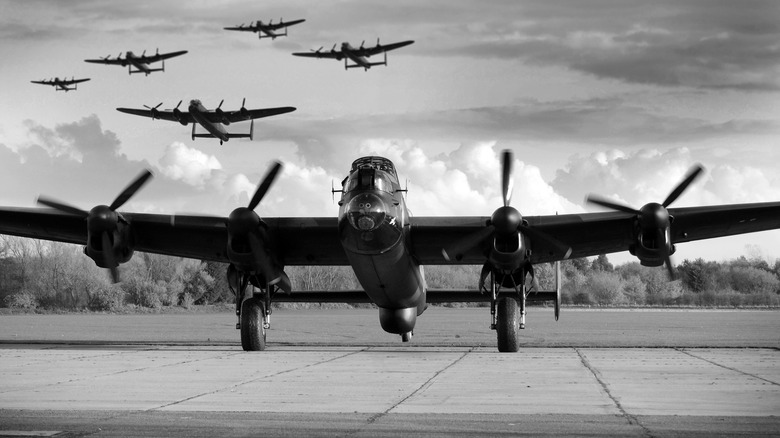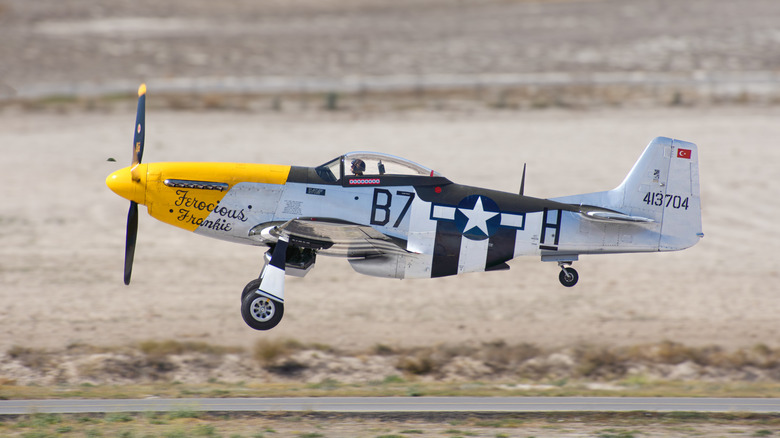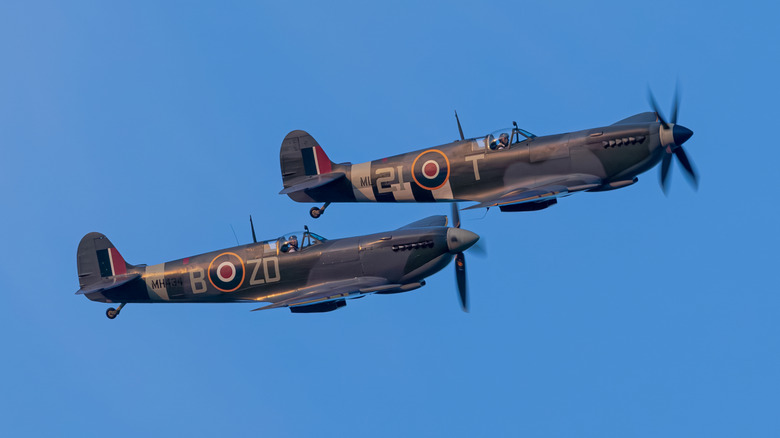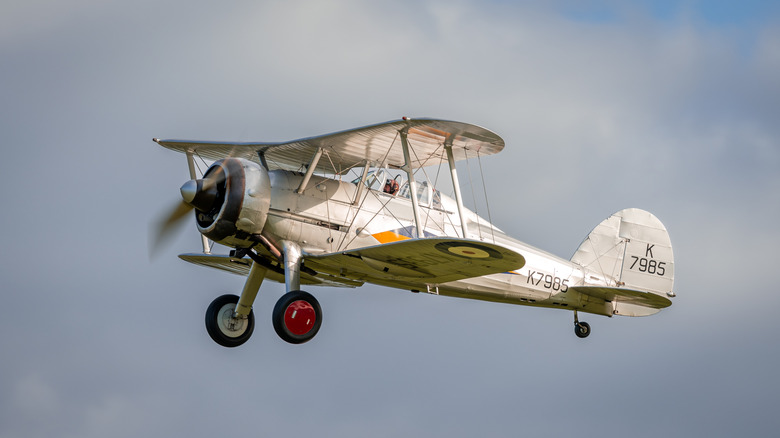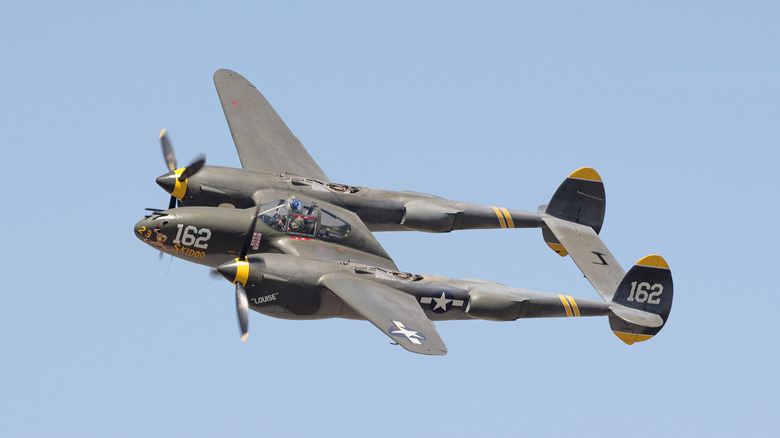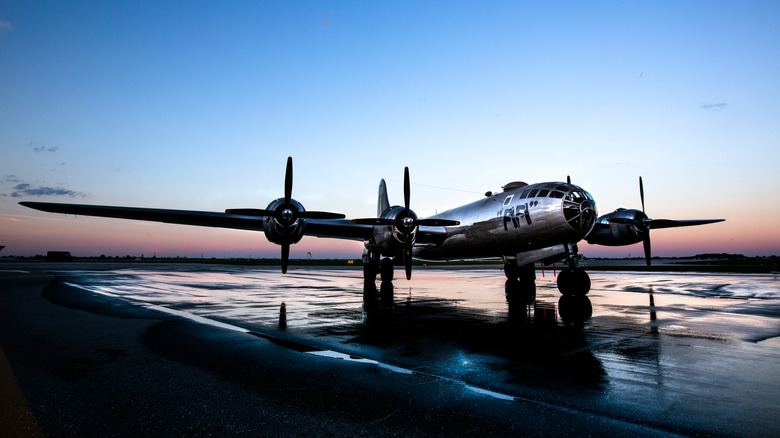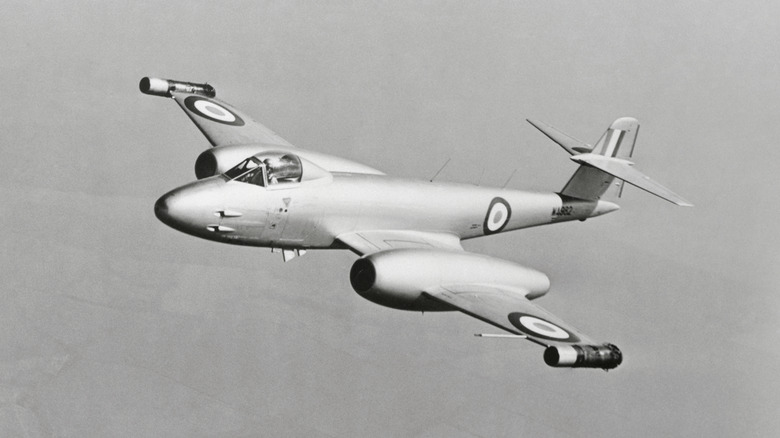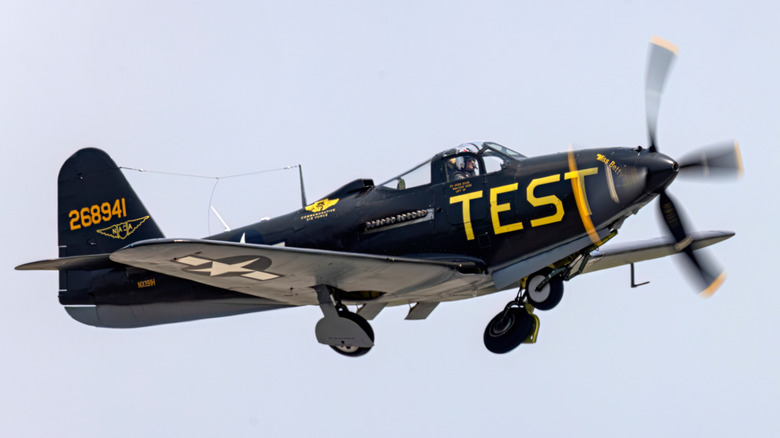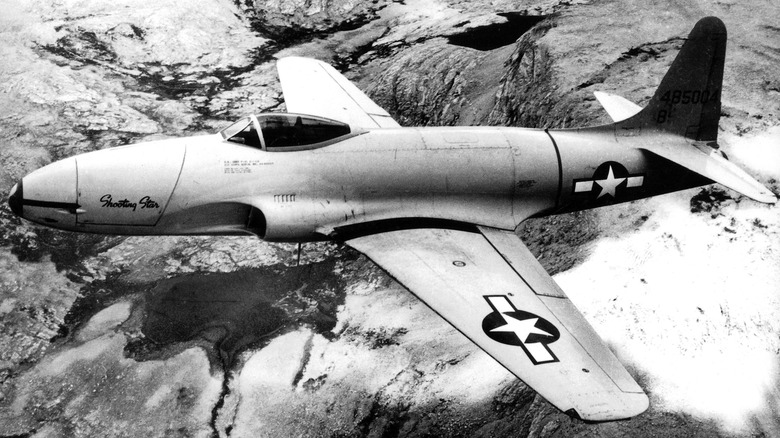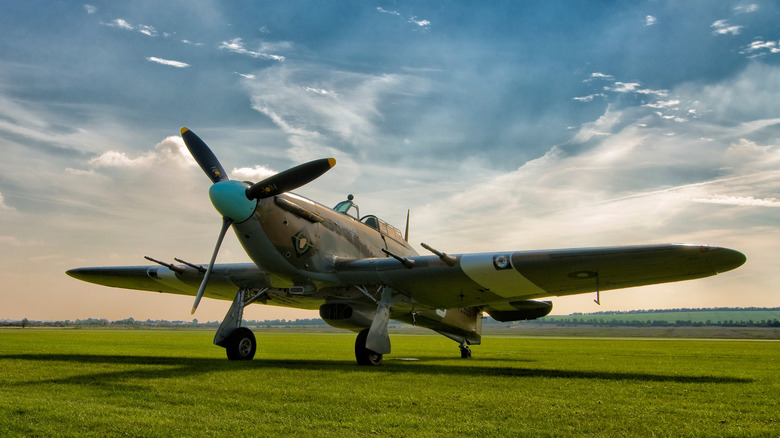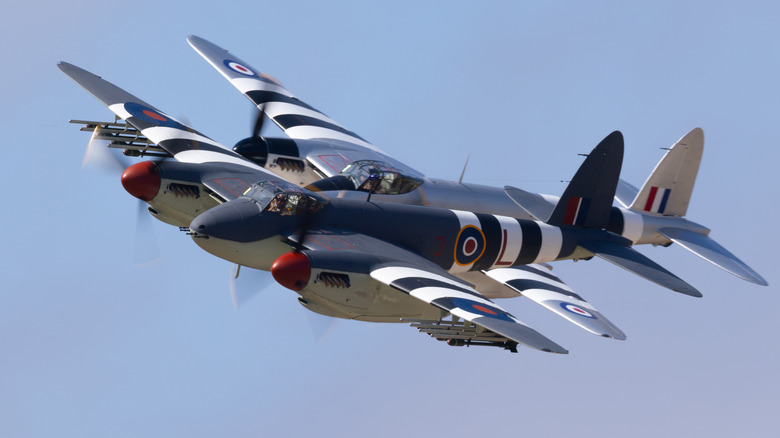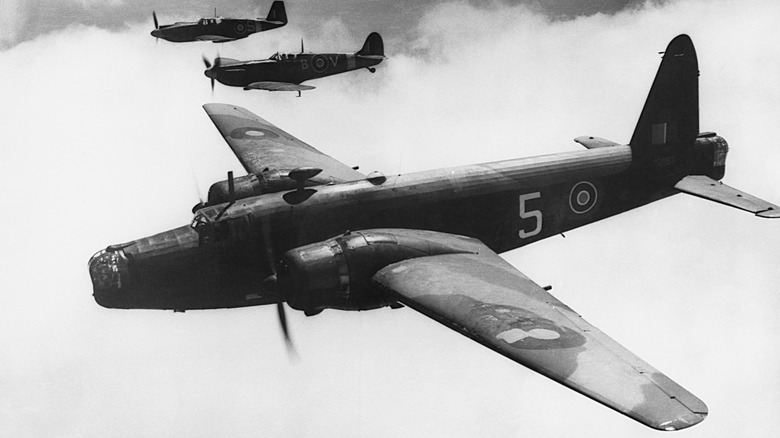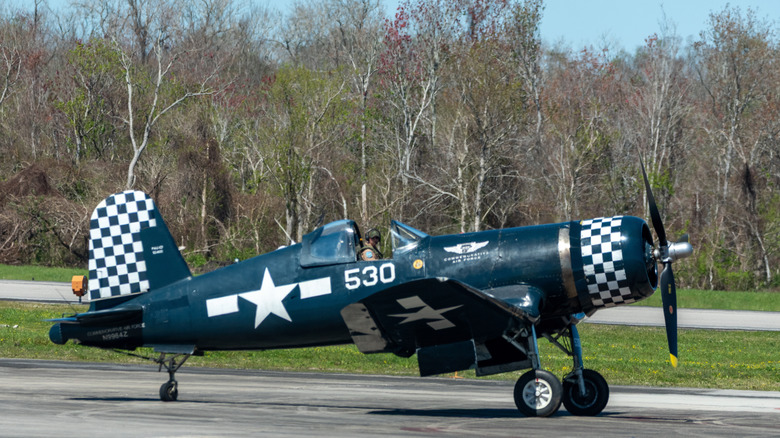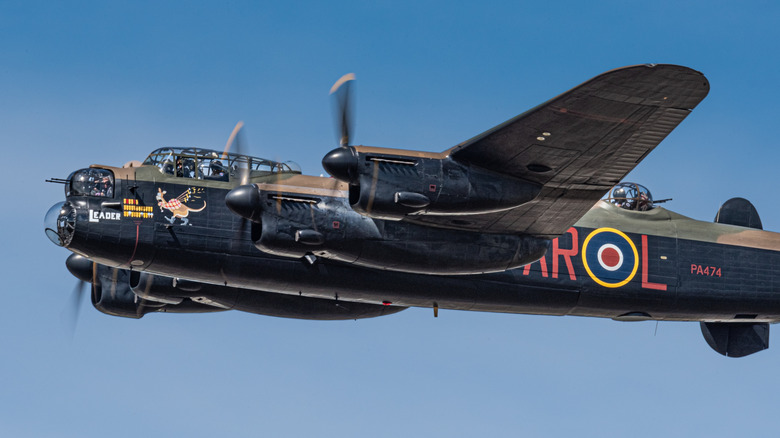13 Of The Best-Looking WW2 Aircraft
Air power may have proved lethally effective during the First World War, but the technology was still in its infancy. By 1939, however, European air forces as well as North American and Asian powers had developed planes with formidable speed, devastating armaments, and plenty of striking aesthetics.
As the Second World War tore through borders and continents, the United States joined the struggle, and Allied forces bolstered their air power with the likes of the P-51 Mustang, Avro Lancaster, B-29 Superfortress, and increasingly lethal models of the Supermarine Spitfire.
These fighters and bombers commanded fear, awe, and — decades later — huge prices in collectors' markets. Tough and brilliant, the following 13 aircraft are the most beautiful planes of the Second World War. They embody the grit and determination of the Allied forces, highlighting the era's design principles and the key elements of successful air combat.
North American P-51 Mustang
The P-51 Mustang is among the most recognized fighter aircraft in history. Roughly 8,000 P-51D variants were built, featuring a 'bubble top' that raised the transparent canopy in a rounded arch over the pilot's head. This allowed for greater visibility, enhancing maneuverability and confidence in the air. It was also the first aircraft to introduce a wing that generated laminar flow. This innovation reduced drag by as much as 50%, combined with the plane's conical lofting. This process created a much smoother outer finish with gradual curves running throughout the aircraft's geometry.
P-51s took on numerous combat and air support roles, such as high altitude and long range attacks in Europe. P-51 operators ultimately destroyed more enemy aircraft than any other in the skies above Europe (4,950 confirmed kills, in total).
Supermarine Spitfire
The Supermarine Spitfire is the icon of British military aviation. It was designed by Reginald Mitchell, a tinkerer through and through and one of the most impressive aircraft designers of his time. Unfortunately, Mitchell succumbed to cancer and didn't live to see the Spitfire's immense role in the war. He did, however, see it become a realized vessel and take to the skies.
Powerful and classically designed, the fighter possessed a two-stage supercharged Merlin engine, a powerplant built in coordination with Rolls-Royce specifically for this vessel. It also featured an elliptical wing that wasn't just an aesthetic choice, although the silhouette is certainly striking. The thin cross-section of the wing's shape minimized drag, achieving much faster movement in the air. It also positioned the eight machine guns outside the propeller's spin diameter, which allowed the design to dispense with an interrupter gear and still fire at targets ahead. Relocated weaponry added another visual change that offered a potent reimagining of the plane's aesthetic language.
The Spitfire was a nimble fighter built on an all-metal airframe that gave a resounding British answer to the German fighters that had been dominating the war effort. Spitfires destroyed 529 enemy aircraft throughout the war, while losing just 230. The aircraft was enhanced throughout the war, with two dozen new models. It was the basic foundation that got the little things right that provides an enduring visual statement that spectators still love today.
Gloster Gladiator
A different sort of visual appeal can be found in the Gloster Gladiator. This was the RAF's last biplane built to offer forward fighting capabilities. It didn't last long in combat against the technically proficient German fighters, but the Gladiator remains a stunning artifact.
The aircraft was designed on the classic double-wing design of the day and sported a single forward propeller and fixed landing gear beneath the hull. While its war service was limited as a result of rapidly evolving aircraft designs, the Gladiator had a small but defiant role in the defense of Malta.
The Gladiator couldn't match the Luftwaffe, but the biplane maintains a special place in the hearts of aviation enthusiasts.
Lockheed P-38 Lightning
An oddity during its time, the P-38 Lightning featured twin booms that connected the tail segment to the front of the aircraft, leaving an empty central area. The design lent itself perfectly to the support of a twin-engine capability, too, something that was prioritized in aerial fighting throughout the Pacific theater.
The aircraft featured a significantly rounded nose, and the bulbous engine compartments just behind its twin propellers on either side of the cockpit complete the visual appeal. This was Lockheed's first military aircraft design, and so the decision to subvert the standard layout is surprising. Famously, Charles Lindbergh flew one in the Pacific and taught other pilots a technique to extend the fighter's range. Col. Robin Olds, a P-38 pilot, called it "the most beautiful plane of our generation."
Not only were these unique fighter planes powered by a pair of Allison V-1710s, but the engines were turbocharged, delivering up to 1,700 bhp to provide both speed and high altitude capabilities (along with a rapid climb rate). The United States' leading ace during the war, Richard Bong, downed 40 enemy aircraft while flying a P-38 Lightning. The vessel hassled and confounded the enemy, so much so that it earned the nickname "the forked-tail devil" from German pilots.
Boeing B-29 Superfortress
The Boeing B-29 Superfortress took over where the B-17 'Flying Fortress' started. The B-29 was larger in all directions, the wings stretched out to a span of just over 141 feet, and the bomber's height came in at 27 feet, 9 inches, making it a little less than twice the height of a modern F-35 and dwarfed by the modern B-52's measurements. It featured twice the range and could also pack in 20,000 pounds of bombs, four times the capacity of the earlier model.
Sitting low on its landing gear and hugging the ground as it waited for liftoff, the massive frame was powered by four propeller engines and featured a large, segmented window that reached up and back over the cockpit. The 99-foot length and grisly array of machine gun barrels pointing out in every direction are all iconic visuals.
The bomber was the first to place its crew in pressurized cabins, allowing the aircraft to reach supreme altitude levels outside the effective interception range of most enemy countermeasures. One pilot said of the aircraft, "It just blew my mind. First of all, its size, and then its capabilities..." Technically and visually stunning, the B-29 was a force of nature.
Gloster Meteor
The Gloster Meteor was the only Allied jet fighter to see combat during the Second World War. The sleek fighter's polished aluminum panels featured subtle curves and jet engines ballooning from each wing in a smooth, aerodynamic form. The tail resembled a guitar pick with a rising vertical tail and a fin segment slashing horizontally through the upper portion of the element.
From above, viewers will quickly spot an interesting detail. The wing shape is elongated front to back, with squat dimensions persisting throughout. The engines are positioned fairly close to the aircraft's centerline, with a roughly 5-foot separation from the fuselage to the powerplants. The tailfin extends to roughly the center of each engine. From there, the wings curve upward at a slight angle. The 'clipped' wings were likely the aircraft's most notable design feature among a raft of eye-catching visuals.
Engineers chose this after testing issues with the Mk. 4 model. Chopping the wings down in the center spurs by nearly 6 feet allowed it to fly with much greater stability, and generating that compact look of engine and cockpit all densely packed together. Some Meteors were retrofitted with the wing modification because production had already begun, potentially forcing the team into this choice rather than redesigning the wings.
Bell P-63 Kingcobra
The Bell P-63 Kingcobra may have been designed for the U.S. Air Force, but it never flew with American insignia on its hull. Instead, the vessel was sent to the Soviet Union, where they were used for training and target practice. All told, more than 3,000 P-63s were produced (with around 2,300 going to the USSR and 300 heading to the Free French forces).
These aircraft were outfitted with additional armor plating and a lighting system that indicated hits earned by pilots engaging them. The aircraft featured a propeller and a side door with a far more angular frame than most military aircraft of the era (and later, for that matter).
The hull looks more like a low-wing Cessna cousin than anything that might have lifted off to protect bombers or shoot down enemy fighters. Its modest properties caused authorities to relegate the vessel to a lend-lease product rather than a fighter donning American or British liveries. Despite that, there's a certain charm about the Kingcobra. From its rounded bottom to the elongated nose and bulged cockpit, the aircraft can easily grow on viewers as a classic example of World War II-era innovation.
Lockheed P-80 Shooting Star
Named for its immense speed, the Lockheed P-80 Shooting Star was the American answer to British and German jet fighters. It was the first U.S. aircraft to surpass the 500 mph threshold while in level flight (and could top 600 mph in certain models). It was the first American jet fighter to see combat (in the Korean War) and the first to be mass-produced.
It also helped that the fuselage featured a smooth outer skin with flush rivets to produce a massively aerodynamic flying machine with some resemblance to the equally flight-ready taper of a bullet. The jet was finished before the end of World War II, going from idea to working prototype in 143 days. Four examples (then designated YP-80) were sent to Europe. However, the war ended before they had a chance to participate in combat operations. Nevertheless, the P-80 is a crucially important WWII-era aircraft, and one that absolutely claims immense cool-factor. It was intended as a high altitude interceptor, but during the Korean War, it took on numerous other tasks.
Hawker Hurricane
The Hawker Hurricane entered service for the RAF in 1937 and quickly became an instrumental fighting tool for the British. It was the lynchpin of aerial defense throughout 1940 and the Battle of Britain, in particular.
At the outbreak of war, Britain had roughly 500 in service, and many flew across the channel to France in the early stages of the war. War production boomed, and by September 1940, the number of Hurricane squadrons in the Royal Air Force had nearly doubled from 18 to 32. During the Battle of Britain, Hurricane pilots destroyed more enemy aircraft than all other air and ground defenses combined.
The aircraft had a cockpit with a sliding window closure to encase the pilot while offering overhead visuals. The short, sleek airframe is simplified, with a short taper that extends from nose to tail. It featured a classic propeller design and carried eight Browning machine guns fitted in the wings and capable of delivering .303 ammunition at an impressive clip. The fighter was fast, relentless, and deadly.
De Havilland Mosquito
The De Havilland Mosquito was a bomber developed with a lightweight plywood and balsa wood airframe. The result was a fast and agile bomber in stark contrast to hulking aircraft like the B-17 and B-29. It featured a strong wing taper that appears largely triangular from above, with the tops of the wings extending out to its 54-foot, 2-inch wingspan in a virtually flat topline.
The aircraft would serve as a key bomber during the war, but got its start as a concept designed to compete in the England-Australia Air Race. The wooden frame was glued and screwed together. The body material obviously lent itself well to maneuverability, and tight turns produced audible vortices at the wing tips. The aircraft was produced in plywood segments that were then joined together with balsa segments, offering spacing between the inner and outer faces. The exterior was fitted with an aircraft fabric to round out the production.
Some 8,000 Mosquitoes were built across Britain, Canada, and Australia, and many were delivered to American flyers through various channels, including the lend-lease program (in reverse). These vessels retained the British naming conventions, but those from Canadian sources were reclassified as 'F-8s' and used for photo reconnaissance. Two Rolls-Royce Merlin engines delivered 3,380 horsepower, combined. The burly nose segment housing the power system draws the eyes first, and the aircraft follows a fairly straightforward taper from there back to the rounded tail fin.
Vickers Wellington
The Wellington was the only British bomber produced throughout the war. It featured a geodetic airframe construction, with something of a honeycomb frame underpinning the vessel's body structure. This choice also allowed for free movement within the aircraft from front to back. The bomber featured a cockpit set back away from the stout nose, while also providing a forward-facing gun turret in a secondary cabin shoved right into the tip of the plane. Another was positioned under the tail and covered the vessel's hindquarters.
The aircraft was quite square in its dimensions. There's a slight taper upward along the bottom of the plane, but the top funnels air essentially straight back over the fuselage. Two propeller engines are crammed in close to the body, and the wings continue outward at a slightly raised angle. The tailpiece was exceedingly tall and housed a singular fin and rudder design that became "a characteristic feature of the Wellington."
The bomber was capable in numerous other roles. They were outfitted with powerful searchlights to support nighttime operations, and anti-submarine and other maritime defense tasks, in particular. Wellingtons made up the bulk of bombers participating in the first 1,000-bomber raid over Germany in May 1940, and one was even built in its entirety in just under 24 hours.
Vought F4U Corsair
The British Navy introduced prototype aircraft carriers during the First World War, but it wasn't until the Second that these vessels became indispensable. In the Pacific Theater, American carriers launched fighters, dive bombers, and torpedo bombers, securing victories at Coral Sea, Midway, Guadalcanal, and numerous others. Aircraft carriers have been the supreme naval force ever since, although there are numerous carrier alternatives.
Among the aircraft launched from carriers in WWII, the Vought F4U Corsair is among the most important. It ran with a 13-foot propeller to deliver major velocity in the air (surpassing the 400 mph mark). To accommodate the extra size, the plane featured inverted gull wings that dip midway along their length. After extensive tests, engineers chose this design to provide low drag, huge speed, and carrier-specific qualities including stout landing gear, slow-speed performance, and acceptable stall figures.
The result was a winning aircraft produced in huge numbers, with over 12,000 built by the time the F4U ceased production in 1952. With a length of just over 33 feet and a wingspan of 41 feet, the small fighter looked a bit like the classic P-51 Mustang from the side, but that dipped wing elevated the design to another level.
Avro Lancaster
The Avro Lancaster was Britain's most successful bomber during the war. It had four massive engines delivering 1,460 horsepower each (the iconic Merlin engines that helped support many British aircraft). Avro produced some 7,300 Lancasters, which specialized in night bombing operations.
The aircraft was a real bruiser. Two bulbous gun turrets greeted viewers from the front (with many more located elsewhere). The pilot was situated above in a cockpit featuring a large glass enclosure wrapping overhead and all the way around the seats. The oval-shaped fuselage, combined with the front compartments, made the vessel look like something of a gigantic over-under shotgun. The massive wings spanning 102 feet were roughly symmetrical, and the aircraft featured dual tailfins rising from either end of the tailwing (itself measuring 33 feet across). This backend design supported greater flight stability and a wider field of fire for the gunner positioned in the rear.
The Lancaster casts a menacing shadow from below. The bomber replaced an earlier 'Manchester' model that flew with two engines but wasn't powerful enough, with most ultimately lost to engine failure. The Lancaster flipped the script. The bomber was crewed by seven and carried over 33,000 pounds of bombs and fuel, with a nearly 2,500-mile range.
